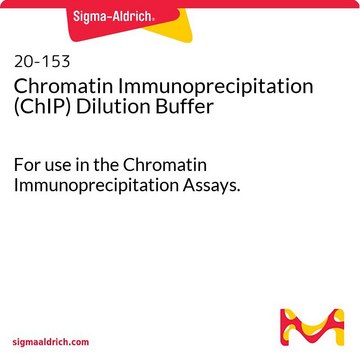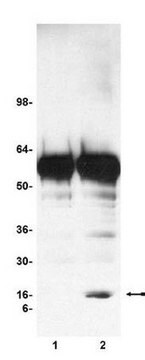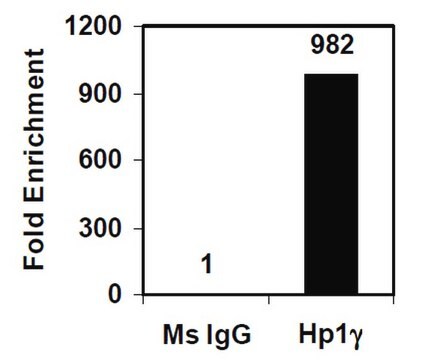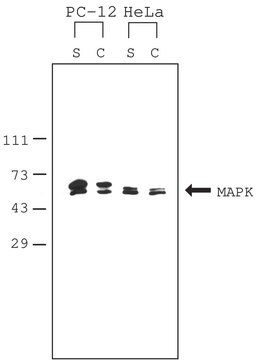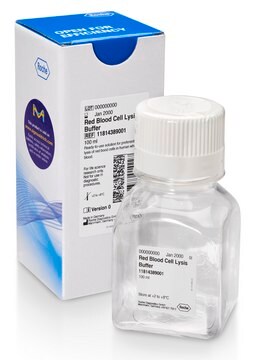20-163
SDS Lysis Buffer - for use in ChIP Assay
For use in Chromatin Immunoprecipitation assays.
Synonim(y):
ChIP Lysis Buffer, SDS Lysis Buffer
Zaloguj sięWyświetlanie cen organizacyjnych i kontraktowych
About This Item
Kod UNSPSC:
41116012
eCl@ss:
32160405
NACRES:
NA.41
Polecane produkty
Zastosowanie
For use in Chromatin Immunoprecipitation assays.
Research Category
All
All
Postać fizyczna
1% SDS, 10mM EDTA and 50mM Tris, pH 8.1
Przechowywanie i stabilność
1 year at room temperature
Informacje prawne
UPSTATE is a registered trademark of Merck KGaA, Darmstadt, Germany
Oświadczenie o zrzeczeniu się odpowiedzialności
Unless otherwise stated in our catalog or other company documentation accompanying the product(s), our products are intended for research use only and are not to be used for any other purpose, which includes but is not limited to, unauthorized commercial uses, in vitro diagnostic uses, ex vivo or in vivo therapeutic uses or any type of consumption or application to humans or animals.
Ta strona może zawierać tekst przetłumaczony maszynowo.
Kod klasy składowania
12 - Non Combustible Liquids
Klasa zagrożenia wodnego (WGK)
WGK 1
Temperatura zapłonu (°F)
Not applicable
Temperatura zapłonu (°C)
Not applicable
Certyfikaty analizy (CoA)
Poszukaj Certyfikaty analizy (CoA), wpisując numer partii/serii produktów. Numery serii i partii można znaleźć na etykiecie produktu po słowach „seria” lub „partia”.
Masz już ten produkt?
Dokumenty związane z niedawno zakupionymi produktami zostały zamieszczone w Bibliotece dokumentów.
Klienci oglądali również te produkty
Chromatin immunoprecipitation from dorsal root ganglia tissue following axonal injury.
Elisa Floriddia,Tuan Nguyen,Simone Di Giovanni
Journal of Visualized Experiments null
Lishan Guo et al.
Molecular medicine reports, 21(2), 909-917 (2019-12-04)
Upregulation of fetal hemoglobin expression can alleviate the severity of β‑thalassaemia. This study aimed to investigate the effects of Oridonin (ORI, a diterpenoid compound) on γ‑globin expression in human erythroid precursor cells and the potential underlying mechanisms. Erythroid precursor cells
Liang Xu et al.
Cancer letters, 482, 74-89 (2020-04-20)
Distant metastasis is the major cause of short survival in ccRCC patients. However, the development of effective therapies for metastatic ccRCC is limited. Herein, we reported that ETV4 was selected from among 150 relevant genes with in vivo evidence of
Nasz zespół naukowców ma doświadczenie we wszystkich obszarach badań, w tym w naukach przyrodniczych, materiałoznawstwie, syntezie chemicznej, chromatografii, analityce i wielu innych dziedzinach.
Skontaktuj się z zespołem ds. pomocy technicznej